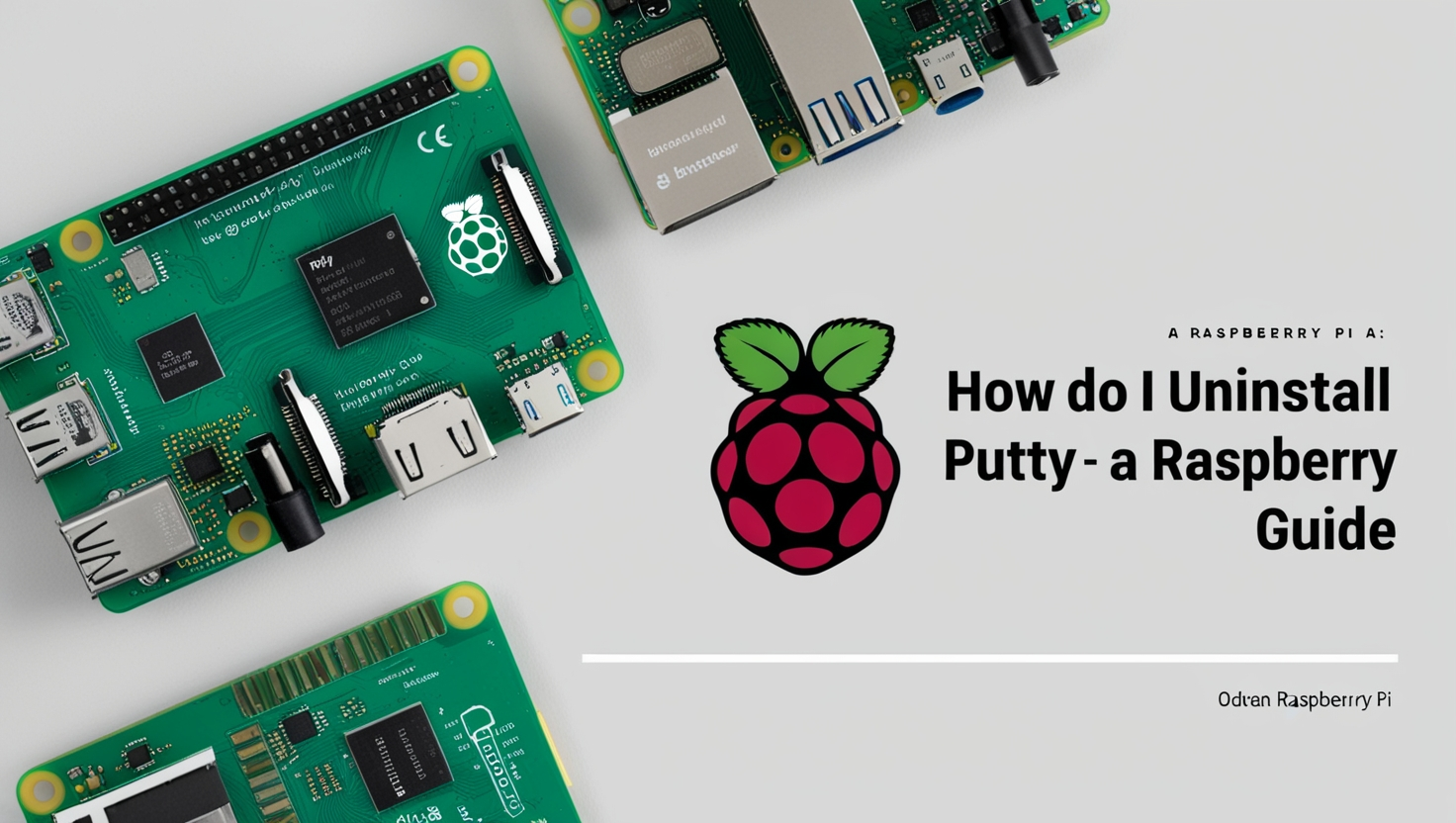Raspberry Pi is a versatile device that developers, hobbyists, and tech enthusiasts use for various purposes, from learning programming to creating complex IoT projects. Tools like PuTTY, a popular SSH and telnet client, are often used to connect remotely to Raspberry Pi systems. However, there may come a time when you need to remove PuTTY for various reasons, such as freeing up storage or switching to a different tool. This guide will comprehensively answer the question, “How do I uninstall PuTTY on a Raspberry Pi” straightforwardly and effectively.
Understanding PuTTY and Its Purpose
PuTTY is widely known for enabling secure communication via SSH (Secure Shell) with remote systems. When working with a Raspberry Pi, PuTTY helps users remotely manage their devices from another computer. While it’s an essential tool for many, you might need to remove it due to redundancy, storage concerns, or troubleshooting. To achieve this, understanding “how do I uninstall PuTTY on a Raspberry Pi” is crucial.
Reasons to Uninstall PuTTY on a Raspberry Pi
Removing PuTTY from your Raspberry Pi could be necessary for several reasons. You may have installed it accidentally, prefer another SSH client, or need to declutter your system. By learning “how do I uninstall PuTTY on a Raspberry Pi,” you can optimize your device’s performance and streamline your tools.
How Do I Uninstall PuTTY on a Raspberry Pi?
To uninstall PuTTY on a Raspberry Pi, you can use straightforward commands through the terminal. Raspberry Pi runs on Linux, typically using the Raspbian or Raspberry Pi OS, which provides package management tools to install or remove software efficiently. Follow these steps to remove PuTTY entirely and answer the question, “How do I uninstall PuTTY on a Raspberry Pi.”
Step 1: Open the Terminal
The first step in “how do I uninstall PuTTY on a Raspberry Pi” is accessing the terminal. The terminal is the command-line interface for interacting with your Raspberry Pi. If you manage the device remotely, you can open it directly on your Raspberry Pi desktop or via an SSH connection.
Step 2: Verify PuTTY Installation
Before removing PuTTY, you should confirm that it is installed on your system. This ensures you don’t uninstall the wrong software by mistake. Use the following command at the terminal to confirm:
Perl
dpkg -l | grep putty
This command searches your system for PuTTY-related packages. If PuTTY is installed, the command will display its details. Confirming its presence is essential to “how do I uninstall PuTTY on a Raspberry Pi.”
Step 3: Uninstall PuTTY
To uninstall PuTTY, use the apt package manager, a standard tool for managing software on Raspberry Pi OS. In the terminal, execute the following command:
Arduino
sudo apt remove putty
The sudo command grants administrator privileges, while apt remove initiates the removal process. The system will prompt you for confirmation. Type Y and press Enter to proceed. This step ensures a thorough understanding of “how do I uninstall PuTTY on a Raspberry Pi.”
Step 4: Remove Residual Files
Even after uninstalling PuTTY, some residual files may remain on your system. To clean them up, run the following command:
sudo apt autoremove
This command removes unnecessary dependencies and leftover files associated with PuTTY. Cleaning residual files is critical to completing the “How do I uninstall PuTTY on a Raspberry Pi.”
Step 5: Verify the Uninstallation
To confirm that PuTTY has been successfully uninstalled, rerun the command:
Perl
dpkg -l | grep putty
If PuTTY is no longer listed, the uninstallation was successful. This verification step is essential for ensuring you’ve fully answered “How do I uninstall PuTTY on a Raspberry Pi.”
Alternatives to PuTTY
Once PuTTY is uninstalled, you might explore alternative SSH connection management tools. Tools like OpenSSH, MobaXterm, or even web-based interfaces can serve as replacements. Knowing your options is part of understanding “how do I uninstall PuTTY on a Raspberry Pi” in the broader context of system management.
Common Issues and Troubleshooting
Error During Uninstallation
If you encounter errors while uninstalling PuTTY, ensure you have administrative privileges. Use the sudo command to execute the removal process. Addressing such errors is crucial for mastering “how do I uninstall PuTTY on a Raspberry Pi.”
Residual Files Persist
If residual files remain even after running auto-remove, use the find command to locate and delete them manually. Proper cleanup is a vital part of the uninstallation process.
Benefits of Uninstalling PuTTY
Freeing Up Storage
Every bit of space counts on a Raspberry Pi. By learning “how do I uninstall PuTTY on a Raspberry Pi” and executing the uninstallation, you free up valuable storage that can be used for other applications or files.
Streamlining Tools
Keeping only essential tools on your Raspberry Pi enhances its efficiency. By removing PuTTY, you ensure your system remains clutter-free and easier to manage.
Improved Security
Reducing unused applications minimizes potential vulnerabilities. Uninstalling PuTTY when no longer needed contributes to your Raspberry Pi’s overall security.
Final Thoughts
Learning “how do I uninstall PuTTY on a Raspberry Pi” is a simple yet essential skill for managing your device effectively. Whether you need to remove PuTTY due to redundancy, storage concerns, or troubleshooting, the process is straightforward with the abovementioned steps.
By understanding this procedure, you take control of your Raspberry Pi’s software environment, ensuring it runs smoothly and efficiently. With a clean system and the right tools, you are better equipped to explore the endless possibilities offered by this remarkable device.
